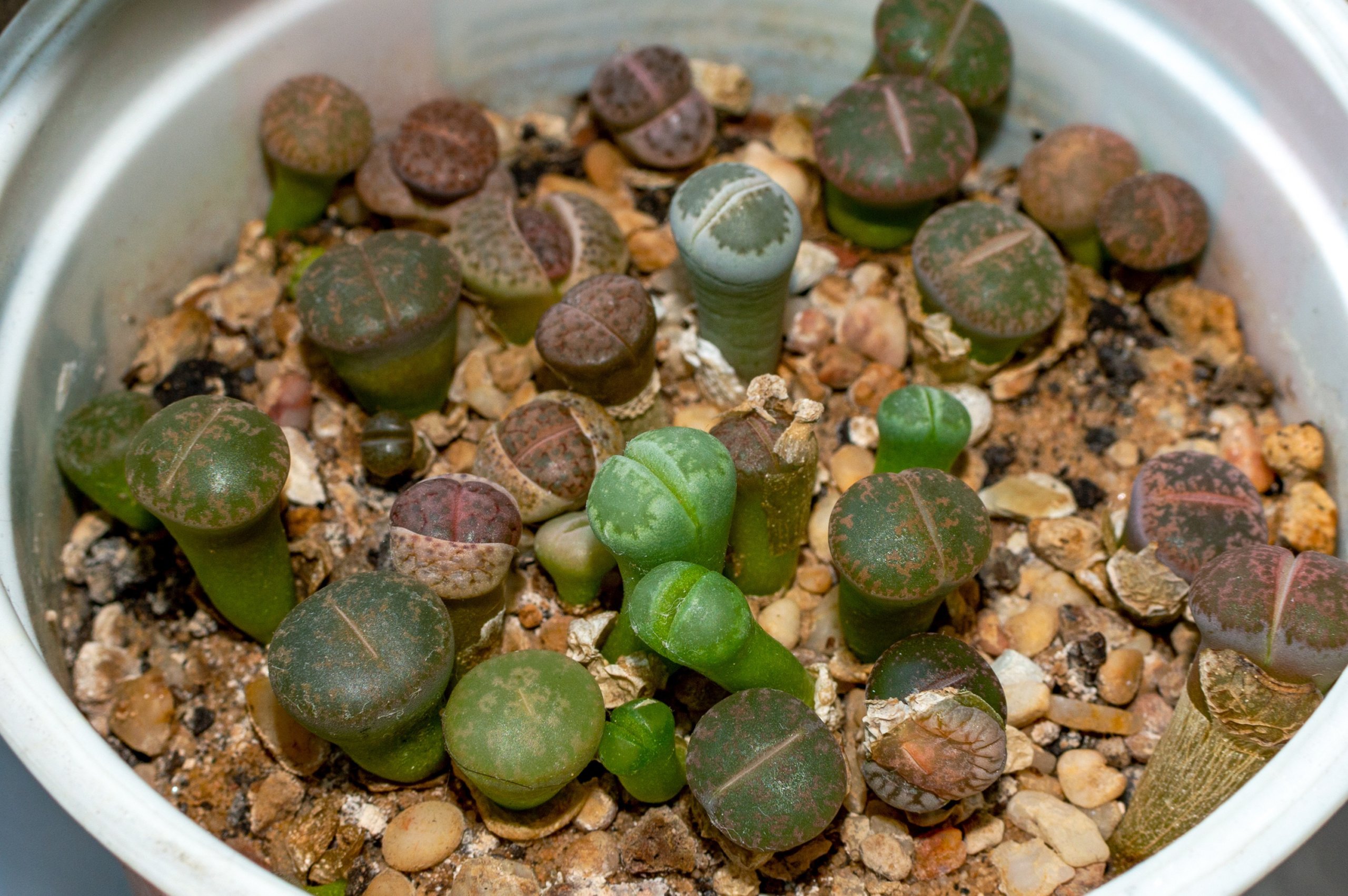Succulents That Mimic Stones
Some succulents have evolved to look just like stones, helping them hide from animals and survive in tough environments. These unique plants, such as Lithops and other mimicry succulents, blend in with rocks and pebbles in their natural habitat, making them fascinating choices for any plant collection. Their unusual shapes and realistic stone-like appearance often catch the attention of both beginner and experienced gardeners.
You might notice these “living stones” because they’re small, often split in the middle, and come in different colors and patterns. Growing these plants can be exciting because they look more like little rocks than typical greenery, adding a fun and unusual touch to your plant collection.
Key Takeaways
- Stone-mimicking succulents use camouflage to stay safe.
- Lithops and similar plants are popular for their rock-like appearance.
- Caring for these succulents is different from regular houseplants.
Understanding Succulents That Mimic Stones
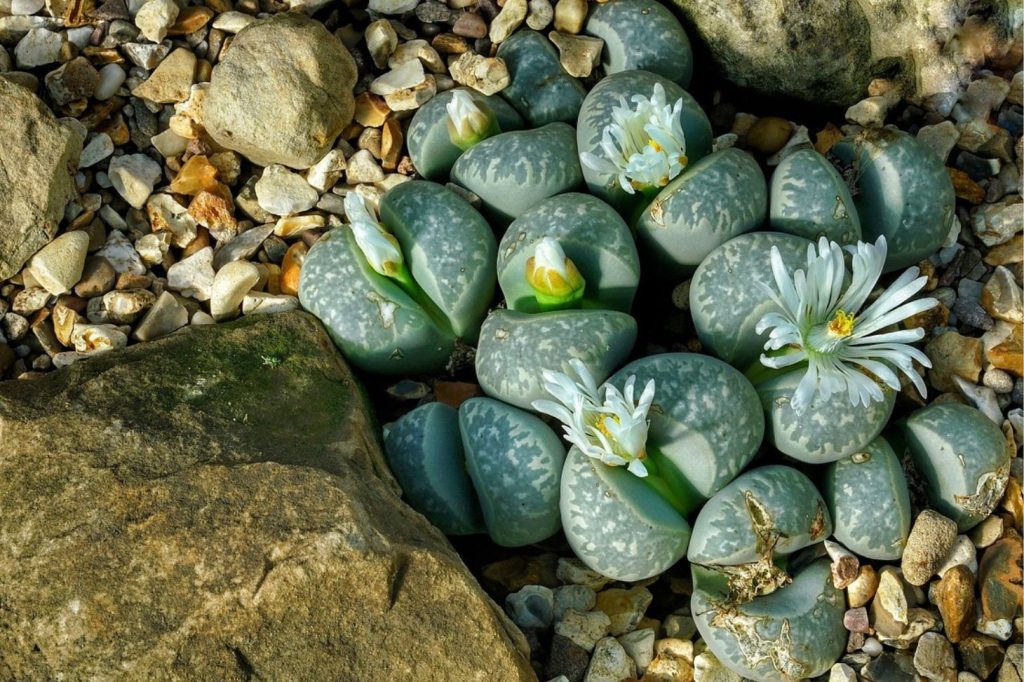
Some succulent plants have a stone-like appearance, helping them blend into their surroundings. These adaptations allow them to avoid being eaten by animals and survive in dry, harsh environments where water is scarce.
What Makes Succulents Resemble Stones
Stone-mimicking succulents, like Lithops and some mesembs, have thick leaves that look like pebbles or small rocks. These leaves are usually shaped like rounded stones, sometimes with grooves or patterns that copy the look of real stones. Most of the plant is underground, with only the top of the leaves showing.
The coloring and patterns match the natural rocks and soil around them. Shades of gray, brown, cream, or green are common. Some plants even have speckles or spots that make them look more like the stones nearby. This strong mimicry helps these succulents hide in plain sight.
The Evolutionary Advantages of Stone Mimicry
Stone-like appearance gives these succulents a survival advantage. By looking like rocks, they are less likely to be noticed by animals looking for food. Many herbivores pass by these plants without seeing them.
Camouflage also protects the plants from harsh sun and dry winds. Being close to the ground and shaped like stones, they lose less water. This helps them get through long dry periods that are common in their native environments, such as the deserts of southern Africa.
Common Features of Stone-Like Succulent Plants
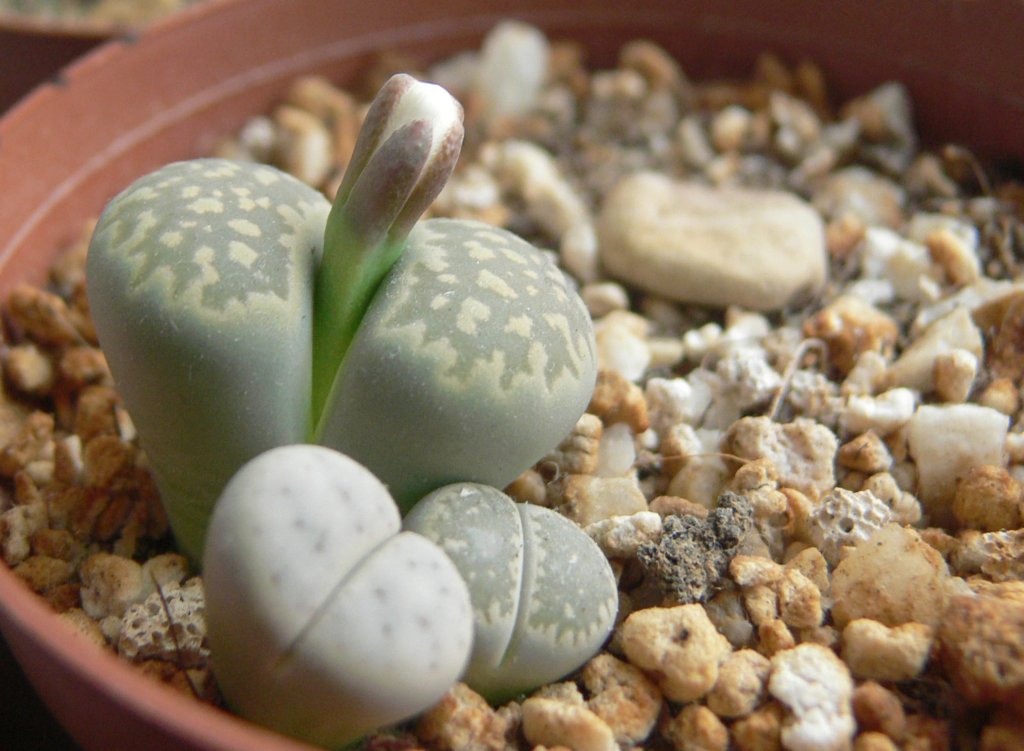
You can recognize stone-mimicking succulents by a few key traits:
- Thick, paired leaves: These grow in pairs that look split open at the center.
- Low growth habit: The plants rarely grow more than an inch or two above the soil.
- Leaf patterns and colors: Many have spots, lines, or patches that look like pebbles.
- Seasonal dormancy: Some stay dormant in extreme heat, stopping growth to save water.
Lithops, also called living stones, are a common example. Other succulents in the Mesembryanthemum family can mimic stones too. These features make them popular among collectors who want unique, low-maintenance plants.
Key Types of Stone-Mimicking Succulents
Some succulents have evolved to resemble stones or pebbles to survive in harsh environments. These plants use unique shapes, colors, and textures to blend into their surroundings and avoid being eaten by animals.
Lithops (Living Stones): Unique Appearance and Adaptations
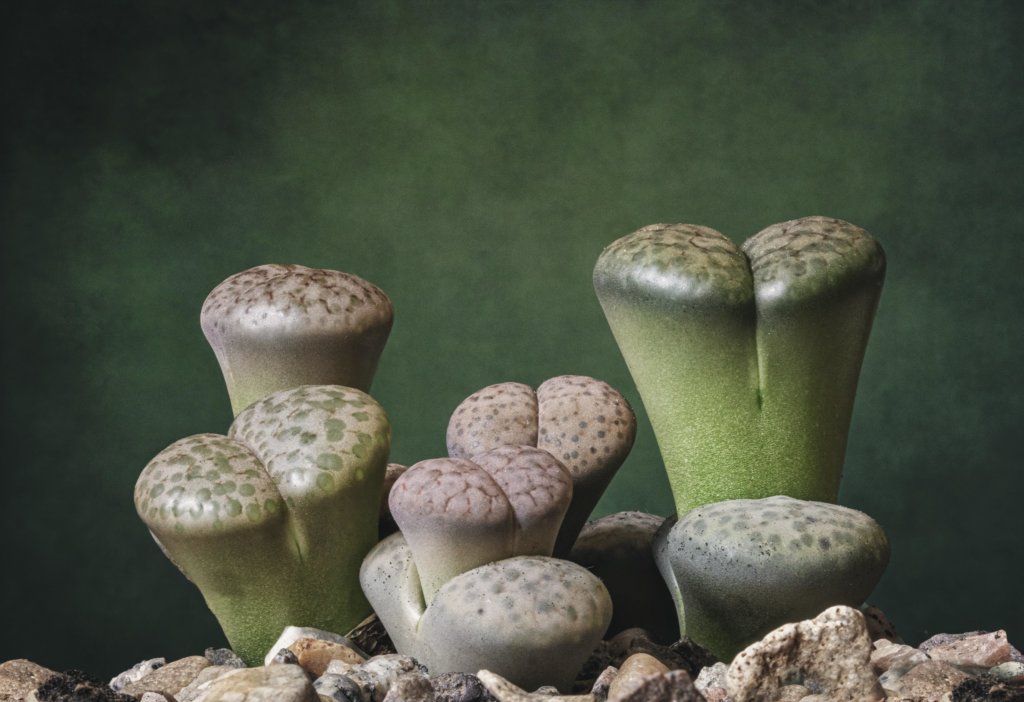
Lithops are known as “living stones” because they look like small pebbles scattered on the ground. Their bodies are made up of two thick, fleshy leaves that are fused together, often split by a shallow groove.
The top of each lithops is flat or slightly domed, with markings and colors that help them mimic the surrounding rocks in their native habitat of southern Africa. Lithops come in many colors, including gray, brown, green, and cream, often with unique spots or lines.
They use camouflage as their main defense. This makes them hard for hungry animals to spot. Lithops only show a tiny part of their body above ground, which helps them hold water and survive in dry, sunny places. They also bloom with small, daisy-like flowers that grow from the center.
| Feature | Description |
|---|---|
| Leaf shape | Paired, thick, fused leaves |
| Color patterns | Mimic stones: spots, lines, patches |
| Native range | Southern Africa |
| Flower type | Small, daisy-like |
Pleiospilos (Split Rocks): Features and Varieties
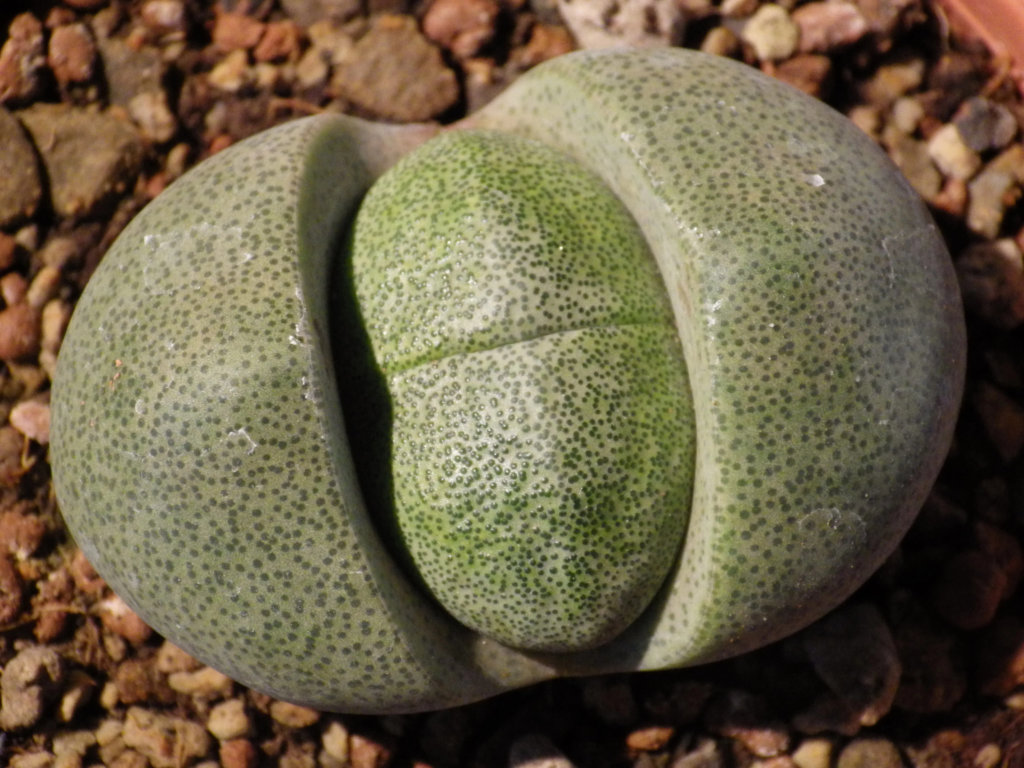
Pleiospilos, called “split rocks,” also copy the look of stones but are generally larger and more rounded than lithops. Each plant usually has two or four thick, fleshy leaves with a deep fissure running through the middle, making it look like a cracked rock.
Split rocks have a rough, sometimes speckled or grainy surface that helps them blend in with gravel and rocky soil. Their leaves are usually gray, greenish, or purple, and some types show spots or speckles. Pleiospilos commonly bloom with large, bright orange or yellow flowers that are much bigger than the plant itself.
The most recognized type is Pleiospilos nelii, which is easy to find in plant stores. Split rocks hold water well in their thick leaves and don’t need frequent watering.
Key features:
- Leaf pairs: 2-4 thick leaves per plant
- Fissure: Deep split in the middle
- Surface: Speckled, often rough
- Flower: Showy, oversized for the plant
Other Noteworthy Stone-Like Succulents
Besides lithops and pleiospilos, a few other succulents have stone-like looks. Argyroderma is one example, with small, egg-shaped leaves that come in blue-green shades. These plants often grow in clusters and may flower in bright pinks or purples.
Dinteranthus is another group. They have thick, split leaves and come in pale grays and greens. They generally stay small, about the size of a marble, and mix well with other mini succulents.

Some types of Conophytum also mimic pebbles. Their round, fused leaves form tight clumps, and they can look almost like tiny stones scattered on the soil. Many of these species bloom at night, releasing sweet scents to attract pollinators.
| Succulent Type | Main Feature | Typical Color |
|---|---|---|
| Argyroderma | Egg-shaped, blue-green | Blue-green |
| Dinteranthus | Split, pale leaves | Gray, green |
| Conophytum | Fused, round clumps | Green, brown |
Cultivation and Care for Stone-Mimicking Succulents
Caring for succulents that look like stones, such as Lithops and Pleiospilos, means creating the right soil mix, controlling watering, and providing proper light and warmth. Paying attention to these needs helps prevent root rot and keeps these perennial succulents healthy.
Soil Requirements and Optimal Conditions
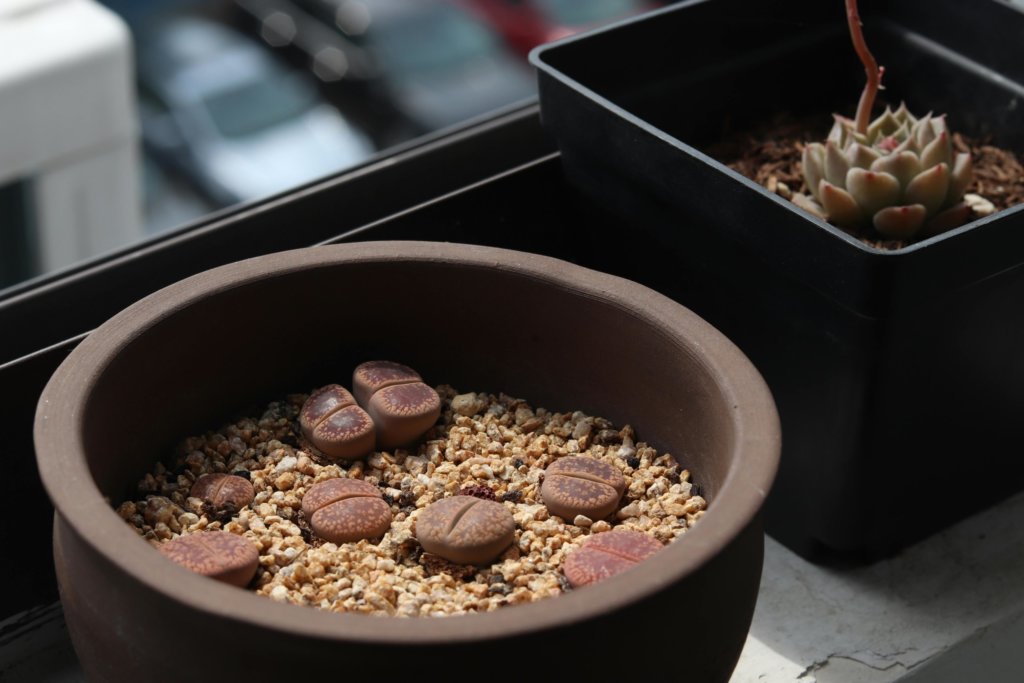
Stone-mimicking succulents need well-draining soil to thrive. Use a mix made for cacti or add coarse sand, pumice, or perlite to standard potting soil. This stops water from pooling at the roots, lowering the risk of rot.
Pot size is important. Choose a shallow container with drainage holes. A gritty topdressing, such as fine gravel, helps keep moisture off the succulent’s leaves.
These succulents do best in low-nutrient environments. Only fertilize sparingly, using a diluted, balanced fertilizer once a year during the growing season. Over-fertilizing causes weak, stretched growth that can harm the plant.
Tip:
- Soil pH should be neutral to slightly acidic, ideally around 6.0–7.0.
Watering Practices and Preventing Root Rot
Keep watering to a minimum. Stone-like succulents, such as Lithops, store water in their thick leaves and are sensitive to too much moisture. Water only when the soil is completely dry, often every 2–4 weeks, and even less in the dormant winter period.
Avoid letting water reach the leaf surfaces. Pour water at the base of the plant, around the roots. Signs of root rot include mushy leaves and yellowing.
During their active growing season, usually late spring to early fall, you may water a bit more, but always let the soil dry between each session. Overwatering is the most common mistake with these plants.
Lighting and Temperature Needs

These succulents need bright, indirect sunlight. Place them near a sunny window or under a grow light that mimics natural light. If kept outside, avoid harsh afternoon sun, which can scorch the leaves.
Temperatures between 65°F and 80°F (18°C–27°C) are ideal. Avoid exposing plants to frost or freezing temperatures, as they are not cold-hardy. In winter, keep them in a dry, cool place with enough light, but avoid humidity.
Good air flow around plants helps prevent moisture buildup on leaves, lowering the chance of fungal diseases. If your plant starts stretching or losing its color, it likely needs more light.

